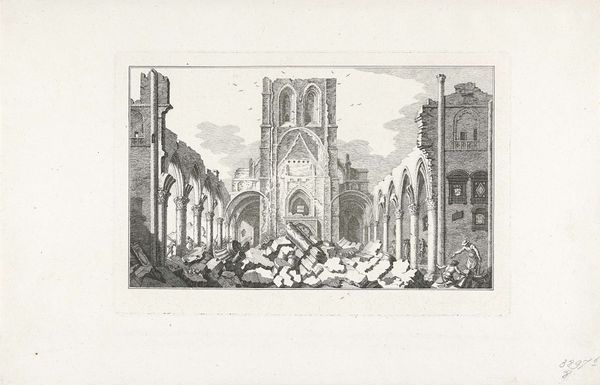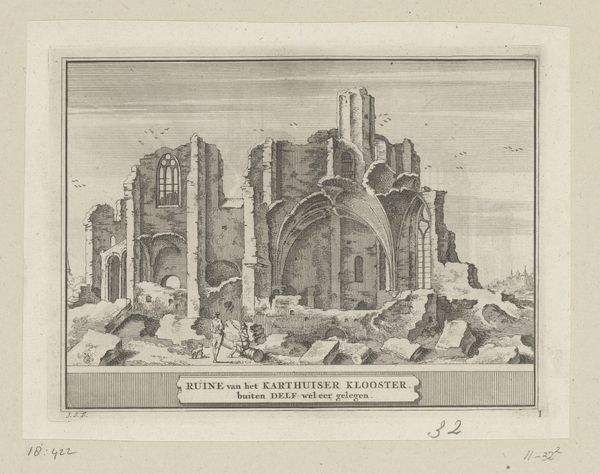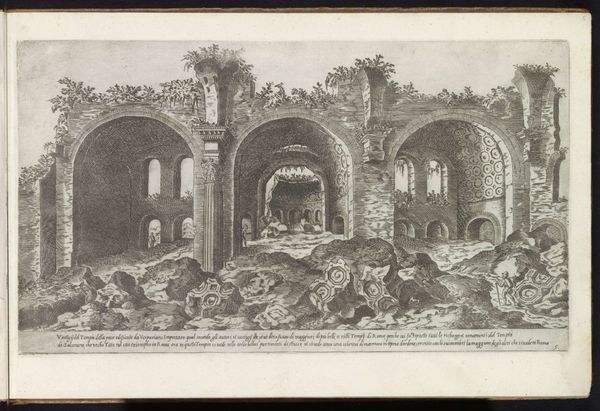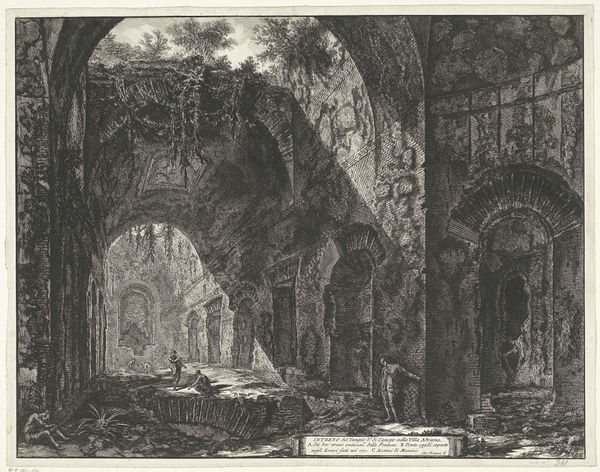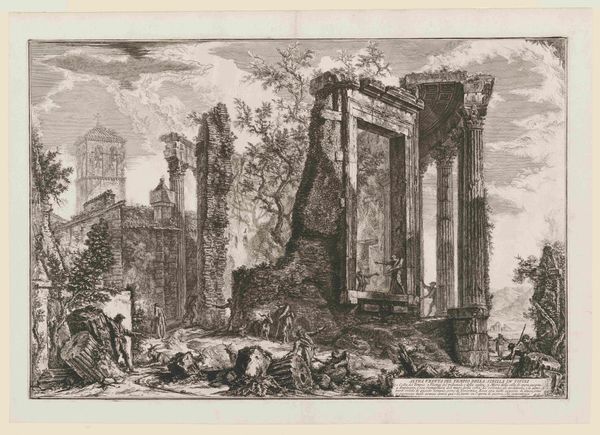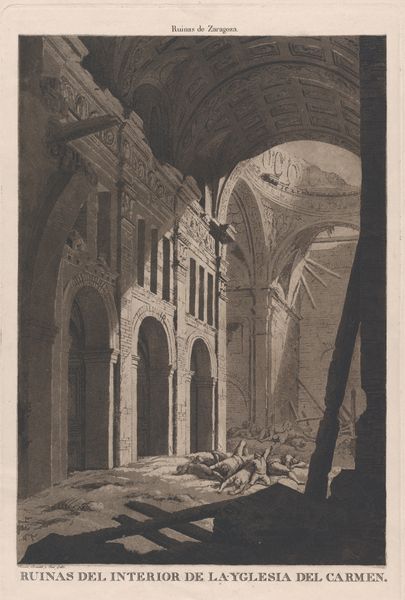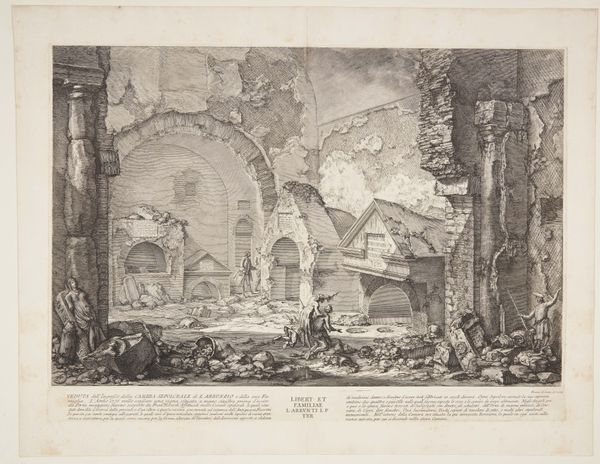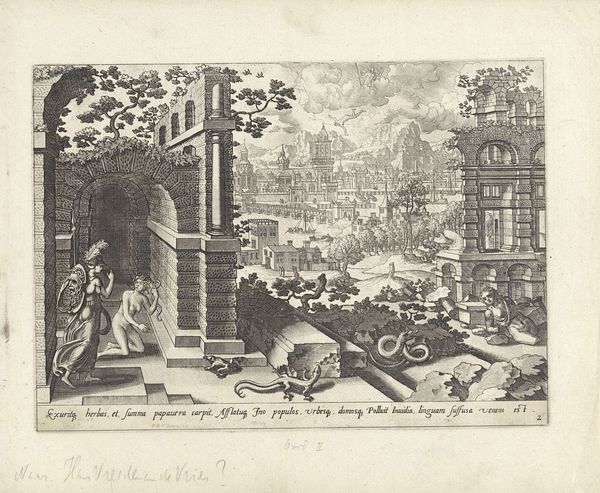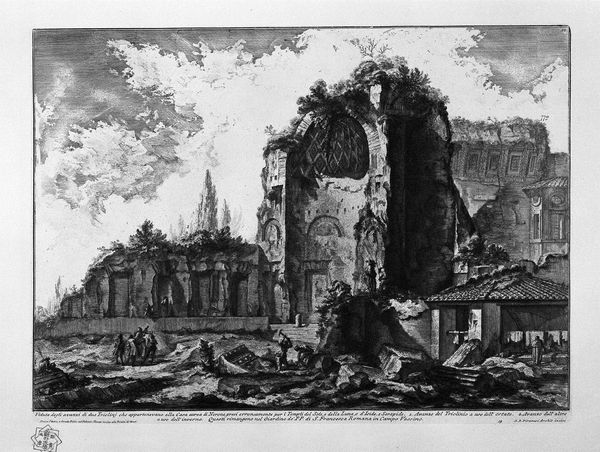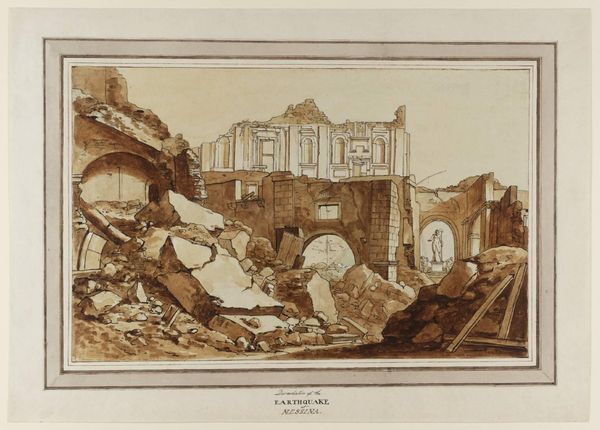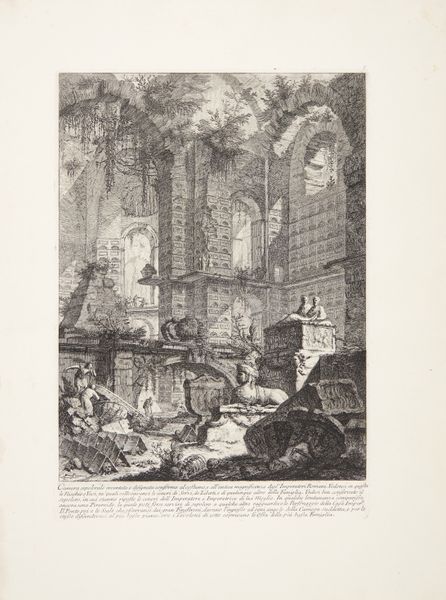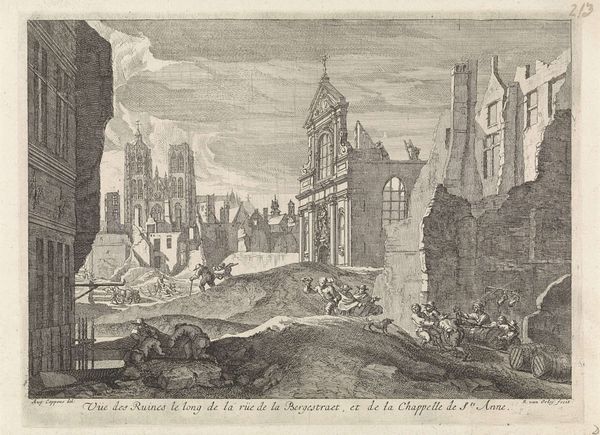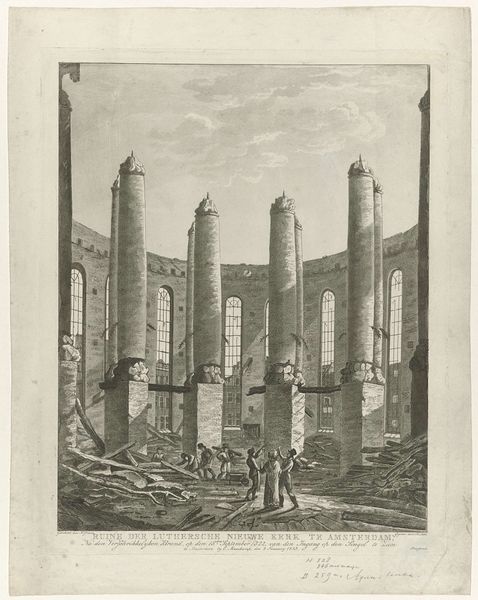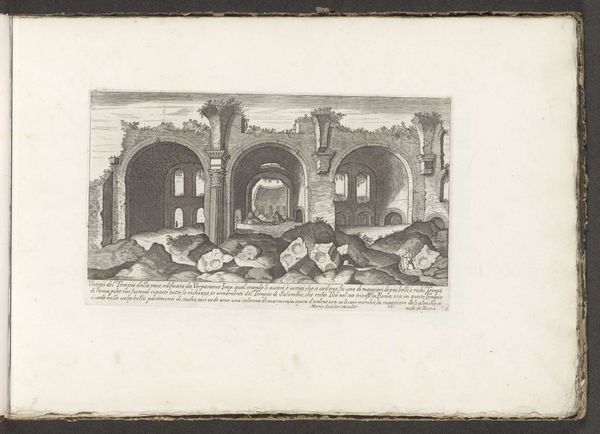
Dimensions: height 178 mm, width 270 mm
Copyright: Rijks Museum: Open Domain
Editor: Here we have Simon Fokke's engraving, "Ruïne van de Grote Kerk van Bergen op Zoom, 1748," made sometime between 1772 and 1780. The devastation depicted is palpable. Looking at the skeletal remains of this grand church, I wonder about the story of its destruction. What can you tell me about it? Curator: This piece invites us to reflect on the fragility of power structures, both physical and societal. It isn’t simply a depiction of ruin; it’s a visual statement on the cyclical nature of history, destruction, and rebirth. This engraving, made decades after the depicted ruin, makes me consider how the people understood concepts such as trauma, war, and identity. Considering the social climate of the Dutch Republic, what message might Fokke be trying to communicate to his audience? Editor: So, it's not just about documenting damage but perhaps commenting on the forces that led to the ruin? I hadn't thought about it in that light. Curator: Exactly. Look at how Fokke frames the scene. There is a detailed depiction, inviting us to contemplate its loss, but consider what power dynamics may have contributed to that event. How does this scene reflect the shifting powers of the Dutch Republic in that era? What voices were silenced as the church crumbled? Editor: I see what you mean. The broken arches could symbolize broken systems of power, too. It really makes you question the permanence of institutions. Curator: Indeed. And remember that engravings like these often served a didactic purpose. Fokke isn't just showing us a ruin; he's prompting us to consider the ethical dimensions of conflict and the long-term impacts on a community's cultural identity. It’s also about who gets to tell the story of the ruins. Editor: I'll definitely remember to consider these sociopolitical dimensions when looking at historical artworks from now on. Thanks! Curator: And I’ll continue to remind myself that historical work requires a sensitivity for a society's history of change.
Comments
No comments
Be the first to comment and join the conversation on the ultimate creative platform.
